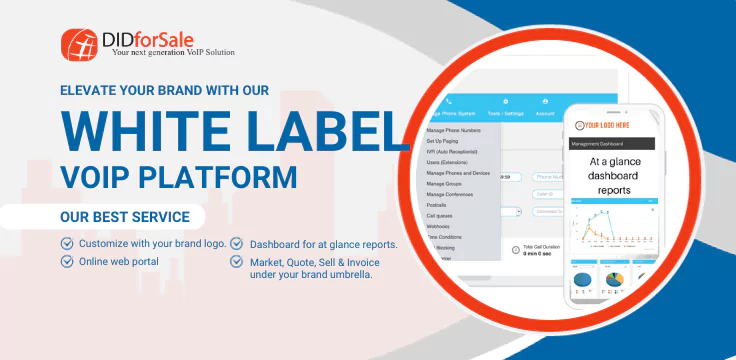A SIP trunk to the rescue? Yes, SIP trunks save companies thousands of dollars each year through Internet-based telephony technology, and are especially useful for companies that have many extensions but a low volume of simultaneous calls.
A SIP trunk is the external component of an in-house IP PBX. The PBX connects calls within an office, extension to extension. The SIP trunk relays calls to and from external phone numbers outside of the office. This means that all internal and external office calls are cheap unlimited Internet phone calls (which are also called “VoIP” calls).
Unlimited SIP Trunking Details
But why would a company go with a SIP VoIP system instead of a hosted PBX system? Many people love hosted PBXs because they are a hands-off business telecom system that allows a company to pay a slightly higher fee (about $20/extension each month) to get unlimited calling on each extension, and complete support and maintenance from their VoIP provider.
SIP trunks are a little cheaper (about $10 to $15 per outbound line) and for a business that is capable of handling their own telecom system, they are a great inexpensive alternative to hosted.
With a SIP system, the customer does have to support and maintain their own in-house IP PBX, but they can customize their business telecom system so that they are only paying for what they need. That is, they don’t need to pay for unlimited calling for every extension. Instead, they only need to buy as many external lines as they need for outbound calling. So, if a company only expects ten outbound or inbound calls at any time, they can pay for ten SIP lines instead of paying for unlimited calling for all 100 office extensions.
A SIP trunk is a great 2013 investment for companies looking to save money, while upgrading the phone system.
1. A SIP Trunk Makes All Calls Cheap Internet Calls
SIP trunking saves a company money in two ways:
1 SIP trunking gives an awesome a cheap option for unlimited calling to all numbers in the US.
2 SIP trunks are cheap and customizable. Pay $10 for each line every month instead of $20 for each extension.
Because SIP trunks use VoIP, all outbound and inbound calls are unlimited. These calls are all translated into Internet calls, which are far cheaper than traditional phone calls that need to travel on physical analog circuits. SIP trunking also offers number portability so a company can keep their current phone numbers, so as to not confuse their customers.
SIP Trunk for your Business
DIDForSale offers the best price SIP Trunking for your business, we guarantee best price, best coverage and Free Support for Asterisk.
[button link=”https://www.didforsale.com/customer/signup/index.php” type=”big” color=”white”] Try it for Free Now![/button]
2. SIP Trunks May Work with Legacy PBX Hardware and Your Current Phones
Companies that have already invested a good deal of money in their legacy PBX systems and do not want to upgrade to a hosted PBX can still use SIP trunks. SIP trunks work with both IP PBXs and some traditional PBXs.
However, if your PBX is old, you may need to get an adapter so that it can run with your business VoIP system. If your PBX is too old, it probably can’t be IP enabled.
Analog Phones with AVA Adapters
SIP trunking also allows businesses to keep their current phones.. The companies simply need to buy AVAs (analog voice adapters) so the older analog phones can translate analog signals into Internet data.
However, many times businesses are better served by replacing their old systems with new IP systems. Many customers report better call quality with hardware built for IP data.
3. SIP trunks Consolidate Extensions
Traditional phone service runs off of expensive copper lines, and every time a company needs more room for concurrent calls they have to buy more circuits. SIP trunking uses Internet bandwidth for unlimited concurrent calls, and bandwidth is easy to increase or decrease. SIP trunking saves a company from paying an unlimited plan for each extension line, since they only have to pay for a limited amount of SIP trunks to manage the simultaneous phone calls.
How SIP Trunks Cut Down on Extensions
With a SIP trunk, businesses only need to figure out how many inbound and outbound simultaneous calls they can expect on a daily basis, and then buy an appropriate number of trunks. For instance, if a business has 30 extensions, but the company only expects about 10 simultaneous calls at any given time, then the business needs to only buy 10 SIP lines.
4. SIP Trunks are Managed In-House
SIP trunking could be considered an in-house system because it depends on a PBX that you own and operate yourself. Of course, you could run your PBX from a co-location center, but at any rate, you as the customer have a large say in how your system is run and maintained because you run and maintain it.
However, this would not be an ideal setup for a small business that is not capable of managing their own PBX. If you are a larger business, you have an IT staff, or your feel capable of choosing and setting up your PBX, you are a good candidate for SIP.
A SIP trunk allows a company to save money on extensions and save money on outbound and incoming calls. Companies don’t have to pay for unlimited use for each and every extension, especially when only a ratio of them are being used. With SIP trunks, businesses have an ally to to save money without sacrificing quality and current machinery.
Jennifer Cuellar is a writer for My VoIP Provider. She writes about SIP trunks, hosted PBXs, and IP business solutions.




